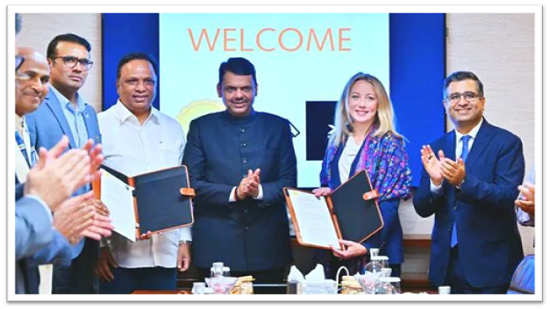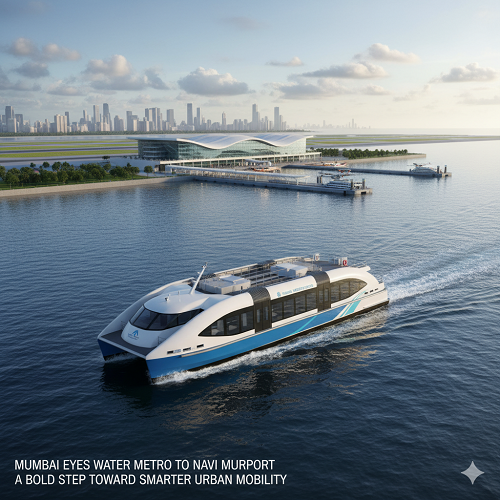
Maharashtra Partners with Elon Musk’s Starlink, A Bold Leap to Connect India’s Most Remote Frontiers
In a historic first for any Indian state, Maharashtra has signed a letter of intent (LOI) with Elon Musk’s Starlink Satellite Communications Private Limited (SSCPL) to bring satellite-powered internet connectivity to its most remote and underserved regions. The partnership represents a significant leap toward digital equity, marking a new chapter in India’s pursuit of inclusive growth under its evolving digital economy.
The move carries strategic weight. For decades, the state’s rural and forested districts, such as Gadchiroli, Nandurbar, Dharashiv, and Washim, have struggled with weak telecom coverage and unreliable digital access. By leveraging Starlink’s low-earth orbit (LEO) satellite technology, Maharashtra aims to connect schools, health centers, public service facilities, and disaster management networks that have long operated in digital darkness. The plan is not just about connectivity, it is about creating a resilient digital infrastructure that supports education, healthcare, governance, and crisis response.
The Deal That Could Redefine Connectivity
The LOI was signed between Maharashtra’s Information Technology secretary Virendra Singh and Lauren Dreyer, Vice President of Starlink, in the presence of Chief Minister Devendra Fadnavis. The event signalled the state’s commitment to becoming a testbed for next-generation communication systems. According to officials, the agreement will function within the regulatory framework of the Union government and will initially roll out as a 90-day pilot project.
The pilot phase will focus on connectivity for tribal and government schools, Aaple Sarkar service centers, primary health facilities, and coastal disaster control rooms, alongside forest outposts and surveillance stations. The initiative also includes training and capacity-building modules for local administrative bodies, equipping them to manage satellite-linked systems sustainably.
Fadnavis described the collaboration as “a bridge across the last digital divide,” emphasizing that every village, every school, and every health center, no matter how geographically isolated, will gain access to fast, reliable internet. “This partnership reflects our commitment to build a truly connected, future-ready Maharashtra,” he said.
Starlink’s Vision and Technological Edge
For Starlink, this partnership marks a milestone in expanding its footprint in India, a country where over 25,000 villages still lack reliable broadband access. Lauren Dreyer stated, “We are honoured to collaborate with the Government of Maharashtra in this first-of-its-kind initiative. Starlink’s mission, which is complementary to other government initiatives and providers, is to connect those who have been left behind by traditional infrastructure.”
Starlink’s system, which relies on a constellation of more than 6,000 low-earth orbit satellites, offers high-speed, low-latency internet access to regions that fiber and mobile towers cannot easily reach. This makes it particularly suitable for hilly terrains, forest belts, and coastal areas, geographies that have long remained on the wrong side of the digital divide.
Dreyer added, “Maharashtra’s vision for inclusive and resilient digital growth perfectly aligns with ours. Together, we aim to demonstrate how satellite internet can empower schools, healthcare facilities, and communities across the most remote corners of India.”
Beyond Connectivity, Building Digital Resilience
The partnership is not limited to bridging connectivity gaps, it is also about creating institutional resilience. Maharashtra is exploring how Starlink’s satellite network could support critical infrastructure corridors, including the Mumbai–Nagpur Samruddhi Expressway, ferry routes, and port operations. These systems often face outages during monsoons or disasters, when terrestrial communication networks collapse.
In recent years, climate-linked disasters such as cyclones and flash floods have underlined the need for robust communication systems that remain functional under duress. Satellite-based internet offers precisely that reliability. Disaster management authorities will be able to use real-time data transmission, GPS-linked alerts, and secure communication channels even during terrestrial outages.
This model aligns with the state’s larger agenda under the Maharashtra Digital Vision 2030, which seeks to integrate artificial intelligence, IoT, and satellite technology into governance and public welfare systems. In doing so, the partnership strengthens both the digital and social fabric of the state.
Economic and Social Impact in Numbers
The economic implications are equally profound. Studies from the World Bank suggest that a 10% increase in broadband penetration can raise GDP growth by 1.38% in developing economies. For Maharashtra, home to over 12 crore residents and contributing nearly 15% of India’s GDP, the multiplier effect of digital inclusion could be transformative.
Education and healthcare are expected to be the immediate beneficiaries. With over 65,000 government schools and 1,200 rural health centers, many located in low-connectivity zones, Starlink’s satellite broadband could enable e-learning, telemedicine, and cloud-based data sharing at an unprecedented scale. For tribal and forest areas, where physical accessibility is often limited, digital access could redefine service delivery models.
The initiative also carries implications for job creation and skill development. The integration of local technicians and administrative staff into satellite operations will generate employment while enhancing technical literacy at the grassroots level.
A Connected Future Beckons
Maharashtra’s partnership with Starlink is both a policy innovation and a philosophical statement. It recognizes that connectivity is no longer a luxury, it is infrastructure, as essential as roads or electricity. By taking this leap, Maharashtra positions itself as a pioneer in democratizing digital access, using space-age technology to solve ground-level challenges.
The 90-day pilot will be a crucial test, not only of the technology’s performance but also of institutional agility and coordination between global firms and local governance structures. If successful, the model could become a blueprint for other states and even central initiatives under the Digital India framework.
This collaboration symbolizes more than technological progress. It is a reaffirmation that governance, when bold and forward-looking, can transcend traditional barriers. In the quiet classrooms of Gadchiroli or the remote health centers of Nandurbar, a satellite signal may soon light up more than just a screen, it may ignite possibilities.




